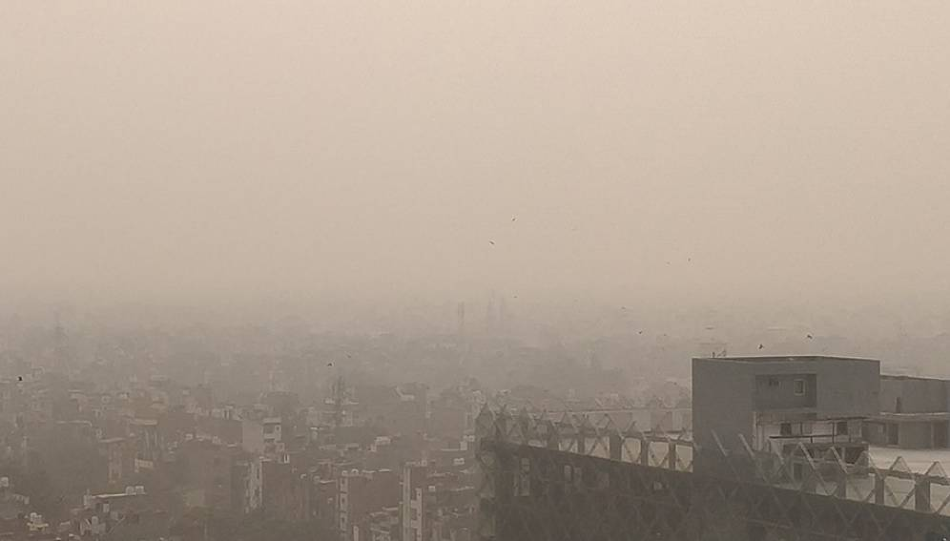Jul 2 2020
According to a new study, the countrywide lockdown in India from March 24th to May 17th, 2020, to prevent the spread of COVID-19 has led to unpredicted results—smog over the national capital of New Delhi was reduced by 50% and solar power generation increased.
 The national lockdown in India has reduced the smog and raised solar power generation in New Delhi, one of the most polluted cities in the world. Image Credit: Copyright—Prami.ap90.
The national lockdown in India has reduced the smog and raised solar power generation in New Delhi, one of the most polluted cities in the world. Image Credit: Copyright—Prami.ap90.
If you improve the air quality you actually make the renewable energy sources, especially solar, work better. So, there’s a positive feedback loop there.
Ian Marius Peters, Research Scientist, Massachusetts Institute of Technology
Peters is the lead author of the study reported in the Joule journal on June 19th, 2020.
Earlier, the researchers had investigated how air pollution and haze modify insolation—the amount of sunlight that reaches the ground and impacts solar panels. However, Peters reports that India’s strict lockdown, imposed on March 24th without any prior notice, rendered it considerably simpler to measure insolation.
IQ AirVisual, a Swiss-based group that gathers air quality data worldwide, rated New Delhi as the world’s most polluted capital city in 2019, for the second straight year.
Fine atmospheric particulate matter that measures less than 2.5 μm (PM2.5) is a major component of air pollution that tends to remain in the air for longer periods compared to heavier particles.
PM2.5 is typically soot produced due to the inefficient burning of fuel by factories, vehicles, and household heating. The particles can scatter or absorb light before it reaches the ground.
The study discovered that in late March 2020, PM2.5 levels over New Delhi declined to almost 50% of the levels recorded at the same time the previous year, where low levels were maintained throughout most of April.
This correlated with an 8.3% increase in insolation at a solar installation located in central Delhi after 20 March than readings from 2017 to 2019. In April 2020, there was an average increase of 5.9% in insolation.
According to Peters, the bonus was improved air quality over New Delhi. “If you were to replace many of the prime sources of air pollution with electrified sources, it should result in an improvement in the air quality.”
Although the team did not gather power generation data, Peters noted that it generally depends on insolation levels. He added that due to the low-profit margins on solar installations, an increase of this level could significantly contribute to a difference in the economics of solar investments.
If you change the output by absolute two per cent, that may be the entire margin that you have. So, it can really be decisive for how much money you’re actually making from the project.
Ian Marius Peters, Research Scientist, Massachusetts Institute of Technology
According to Michael Bergin, an engineer at Duke University who has also analyzed the influence of air pollution on solar panels, the impact could be much higher since reduced air pollution also denotes settling of less dirt on solar panels, which further obstructs sunlight.
Our recent study found that the influence of particulate matter soiling is roughly the same as that from the influence of ambient particulate matter. So, it is possible that the real influence of particulate matter is double the eight per cent.
Michael Bergin, Engineer, Duke University
Since several solar installations are not set up in urban areas that record the worst pollution, Peters confesses that it does not give a clear picture of the effect this phenomenon could have on India’s wider solar industry.
However, according to Martin Wild, a climatologist from ETH Zürich in Switzerland who investigates the effect of air pollution on solar radiation, the evidence indicates that the effects are not just limited to areas where air pollution is generated. “We’ve come to the conclusion that it’s really a large-scale effect, not just an urban effect,” he noted.
Journal Reference:
Peters, I. M., et al. (2020) The Impact of COVID-19 related Measures on the Solar Resource in Areas with High Levels of Air Pollution. Joule. doi.org/10.1016/j.joule.2020.06.009.